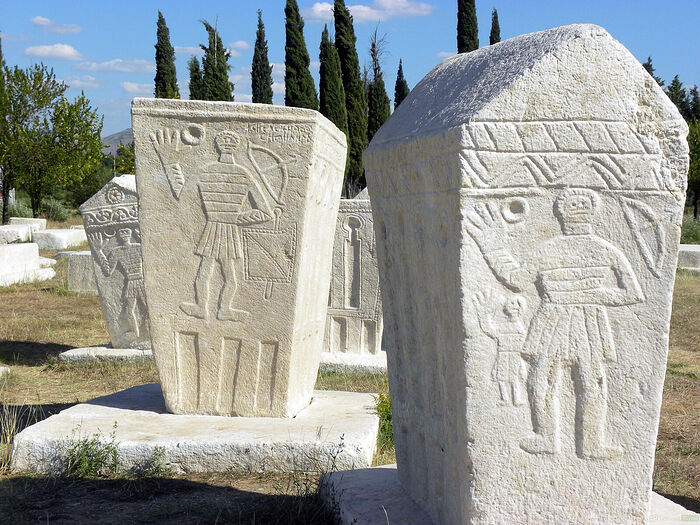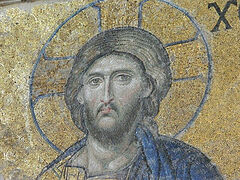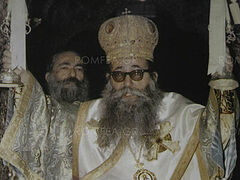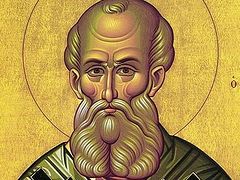Pravoslaive.ru is continuing its publication of excerpts from The History of Pre-Christian and Christian Europe, a new book written by the church historian and canonist Archpriest Vladislav Tsypin. We present English translation of some selections on OrthoChristian.com
The religious life of Bulgaria during the reign of Tsar Peter was marked by painful developments associated with the emergence and spread of the Bogomilist heresy. The heresy was named after one of the heresiarchs, a priest called Bogomil, whose name may have been a translation of the Greek name Theophiles. The heresy spread among the rural clergy, wandering monks, and peasants. In other words, it gained popularity among the underprivileged Bulgarians. The heretics were colloquially referred to as “kudugers,” which was a distorted form of the Greek word “kalugers” meaning “monks” or “elders.” In Serbia, where the heresy also took hold, its followers were called Bogumils or Babuns, after the Babuna mountain where Bogomils often resided. The earliest written evidence of the heresy can be found in a letter from Theophylact, the Patriarch of Constantinople, to Tsar Peter of Bulgaria. However, the most detailed information about the development of the heresy and its doctrine is contained in the treatise entitled The Homily Against the Newly-Appeared Bogomil Heresy written by Cosmas the Priest in the second half of the tenth century. Writing about the heresiarch, Cosmas sarcastically remarks that “he is actually not dear to God”1 (a play on words as Bogomil literally means “dear to God”), and refers to the heresy itself as “ungodly”. Another treatise criticizing Bogomil teachings and practices is Against the Bogomils, written by Byzantine philosopher Euthymios Zigabenos.
The heresy was fueled by the rejection of the existing society, which was perceived to be highly inequitable
The heresy was obviously influenced by Paulicianism. The Imperial authorities relocated Syrians and, more commonly, Armenians, suspected of being the followers of Paulicianism from Asian provinces and themes to Macedonia and Thrace in the Balkans. Interacting with their new neighbors and engaging in religious discussions, the Slavicized crypto-Paulicians successfully intrigued and misled many people with their beliefs, which fundamentally rejected the notion of God’s truth existing in the world. In other words, the heresy was fueled by the rejection of the existing society that was perceived to be highly inequitable, and that was probably why the heresy predominantly spread and took root among the lower levels of the social pyramid.
The British Byzantinologist D. Obolensky noted the protest message of the Bogomil heresy, stating that
“It was successful… because unlike the Bulgarian boyars in the nineth century, its leaders did not try to restore the old pagan way of life. Furthermore, their fight against foreign domination did not resort to violence that marked the anti-Empire uprisings in Bulgaria between the ninth and twelfth centuries. The Bogomils challenged Byzantine Christianity on its own turf and tried to beat it at its own game, using the moral arguments from the Gospel to advocate for social equality, righteousness and compassion toward the unjustly suffering.2
It should be noted, however, that this description of the heresy may present an overly positive view and exaggerate its success. In the end, the Byzantine, i.e. Orthodox, counterarguments prevailed over the heresy.
While the Bogomil doctrine had roots in Paulicianism, it was different from the original Paulicianism that openly embraced Manichean dualism. Typologically, if not genetically, Bogomilism exhibited similarities to ancient gnostic sects, particularly with Marсian’s teachings rejecting the Divine inspiration of the authors of the Old Testament.
“The Secret Gospel of John” or “The Book of the Secret Supper” that consisted of apocryphal conversations between Jesus and his favorite disciple John served as “holy scripture” for the Bogomils. The original Church Slavonic text of this book has not survived, but it is known through its Latin translation. The book contains the mythological doctrine of the heresy. According to Bogomils’ teachings, God created an invisible universe, and His first-born son Satanail helped Him manage it. Driven by pride, Satanail rebelled against his Creator, seeking to overthrow Him and establish his own throne in the invisible seventh heaven. Some angels joined the rebellion, but God intervened and cast down Satanail and the rebellious angels from heaven. However, Satanail still possessed his gift of creation that God had given him earlier, so he used it to create the visible world out of chaos. According to Cosmas, the Bogomils believe that
“All things in the world were created by the Devil’s will: heaven, sun, air, earth, people, churches, and crosses. And they attribute all things created by God, all things existing on Earth, to the devil.”3
According to Bogomil teachings, human nature is dualistic: the body is created by the fallen Satanail, while the soul is created by God.
According to the Bogomils, Satanail created the cosmos, plants, animals and, eventually, Adam and Eve, but he could not grant them souls, so he asked God, against Whom he had rebelled, to grant them souls. In His mercy, God took pity on Adam and Eve and granted them souls and lives. God intended for Adam and Eve and their descendants to replace the fallen angels. According to Bogomil teachings, human nature is dualistic: the body is created by the fallen Satanail, while the soul is created by God. Satanail began to reign on Earth and people began to worship him as God. Disguised as a snake, he tempted Adam and Eve in Eden and, acting as Cain, killed the righteous Abel. Bogomils believed that Prophet Moses was Satanail’s servant; they rejected the Old Law and all Old Testament scriptures, believing them to have been instigated by Satanail. They also attributed the Flood and other disasters mentioned in the Old Testament and the histories of various nations to Satanail’s influence.
To save humanity from the reign of Satanail, the merciful God supposedly summoned His younger Son Jesus and He came to this world in an ethereal body that only looked like the bodies of Adam’s descendants. Jesus’s death on the cross was temporary. Three days after the crucifixion, Jesus chained Satanail and removed the syllable “il” (meaning “God”) from his name, thereby stripping him of his divinity. Jesus then ascended to heaven to sit alongside His Father and govern the angelic realm. Subsequently, God summoned up the Holy Spirit who works through the human souls. When Bogomils who had experienced the breath of the Spirit visually die, in reality they move to the invisible heaven. Satan’s reign on Earth would persist until the Second Coming of Jesus, at which point Satan, his adepts and sinful people, would be cast into hell. This cosmogonic and soteriological legend appears to be a retelling of the Bible by a poorly educated madman with wild imagination.
The Bogomils rejected the Church and its Sacraments; they didn’t venerate the Mother of God, saints or relics, nor did they believe in miracles.
The Bogomils rejected the Church and its Sacraments and rituals. Just like extreme Protestants, they didn’t venerate the Mother of God, saints or relics, nor did they believe in miracles. They recognized the authority of the New Testament, but interpreted it in accordance with their own doctrine, rejecting Holy Tradition, the Ecumenical Councils and their dogmatic canons, and the writings of the Church Fathers. The Lord’s Prayer was the only prayer they used.
In the political and social sphere, Bogomils rejected the tsar’s power and all forms of government. They renounced the rich and disavowed the poor people’s desire for wealth:
“They teach their families not to obey authorities, to renounce the rich, hate the tsar, insult the elders, rebuke the boyars; to believe that those who work for the tsar are ungodly slaves should be told not work for their masters.”4
Bogomil preachers believed that social inequality was evil, and in this respect their belief was the precursor of Communist and Anarchist ideologies, including Tolstoysim. Bogomils believed that they were reviving the social ethics of the early Christian apostolic community.
In their daily lives, they practiced abstinence, and marriage was permitted for the imperfect; they did not consume meat or wine, dressed modestly, avoided acquisitiveness and idealized poverty. However, the Orthodox writings against their teachings portrayed this ascetism as ostentatious and Pharisaic. According to Cosmas,
“The heretics appear meek, modest, reserved and taciturn, and their hypocritical fasting causes them to look pale. They don’t talk much, and don’t laugh loudly or put on airs. They avoid people and don’t do anything that would make them look different from the Orthodox Christians… Observing their great ‘humility’, people assume that Bogomils are Orthodox and can show them the way to salvation. So they ask them how to save their souls. Just like a wolf about to devour a sheep, Bogomils first lower their gaze, sigh and answer humbly… Whenever they meet a simple or uneducated person, they sow in him the tares of their teaching, corrupting the traditions and canons of the Church.5
The other side of Bogomil ascetism may have been the excess of moral depravity within their communities.
The other side of Bogomil ascetism may have been the excess of moral depravity within their communities, which they justified by claiming that all aspects of secular life were governed by God’s adversary Satan and that there was no way to escape this evil. A curious indirect proof of the valid criticism of Bogomilism by Orthodox polemicists can be found in a definition of the French word bougre, which in Middle Ages was used to refer to the heresy of the Cathars and the Albigensians. Since it was known that this heresy—which shook the religious and political life of Western Europe—originated from the Bulgarian Bogomils, it was called the Bulgarian (bougre) heresy. Over time, this word evolved into an obscenity associated with sodomy. A few centuries later, Bogomilism spread and took root in Bosnia, and in the West sexual debauchery became known as “the Bosnian custom”.6
Two centuries after the emergence of the heresy, Princess Anna Comnena, the daughter of the [Byzantine] Emperor, described the origins of Bogomilism as follows:
“The two well-known and most evil and disgusting teachings, the impiety of Manichaeans… that we also called the Paulician heresy, and the shamelessness of Messalians were combined to form the Bogomil teaching… The teaching existed even before my father ascended the throne, but it kept a low profile, as Bogomils could cleverly hide behind a guise of piety. You won’t find a person with a modern haircut among the Bogomils: the evil hides under cloak and klobuk. Bogomils appear sullen, with there faces covered up to their noses, walking with their heads down, muttering something under their breaths. But in their hearts they are like rabid wolves.”7
Anna Comnena’s description of Bogomils brings to mind the Klysts8 and their white clothing. This analogy may clarify why she mentioned the Messalian heresy when discussing the origins of Bogomilism. While the influence of Messalianism cannot be directly traced in Bogomil doctrine, its indirect influence can be seen in the ideology of the Russian Khlysts.
No information is available regarding the original Bogomil communes, but a partial picture can be formed based on recent Bogomil communes in Bosnia. The commune consisted of three ranks: “the peasants” (meaning “Christians”) or “the perfect”, “the believers” and “the listeners”, i.e. catechumens. The peasants, who had to be celibate (they were likely the literate monks who had abandoned the Church), served as priests and performed rituals for the believers. The listeners attended sermons and the readings of the Lord’s Prayer. They became believers when the apocryphal Secret Gospel of John was placed on their heads, the Lord’s Prayer was read, and the Holy Spirit was invoked. The head of the community was called “dedets”, as colloquially, Balkan Slavs used to refer to their bishops as “grandfathers”.
It is indeed likely that Holy Tsar Peter learned about the heresy of Bogomilism and its danger from the letter sent to him, the “Emperor of Bulgaria”, by Theophilact, the Patriarch of Constantinople. Based on what is known about this hierarch, who was a younger son of Emperor Roman Lakapine, the letter was not written by him, but rather it was likely composed by a clerk of the Patriarchate. The letter vaguely describes Bogomilism as a mixture of ancient Manichaeism and Paulicianism. It was common for Byzantines to describe new phenomena with words taken from annals. The Constantinople Patriarchate urged the Bulgarian Emperor to identify the heretics, do everything possible to persuade them to change their beliefs and steer them onto the right path, but if they persisted in their malevolent ways, to execute them in order to stop the spread of their heresy. Later, the Constantinople Patriarchate sent another letter on the same subject. It looks like the ruler of Bulgaria followed this advice, but he wasn’t too keen on the executions.




